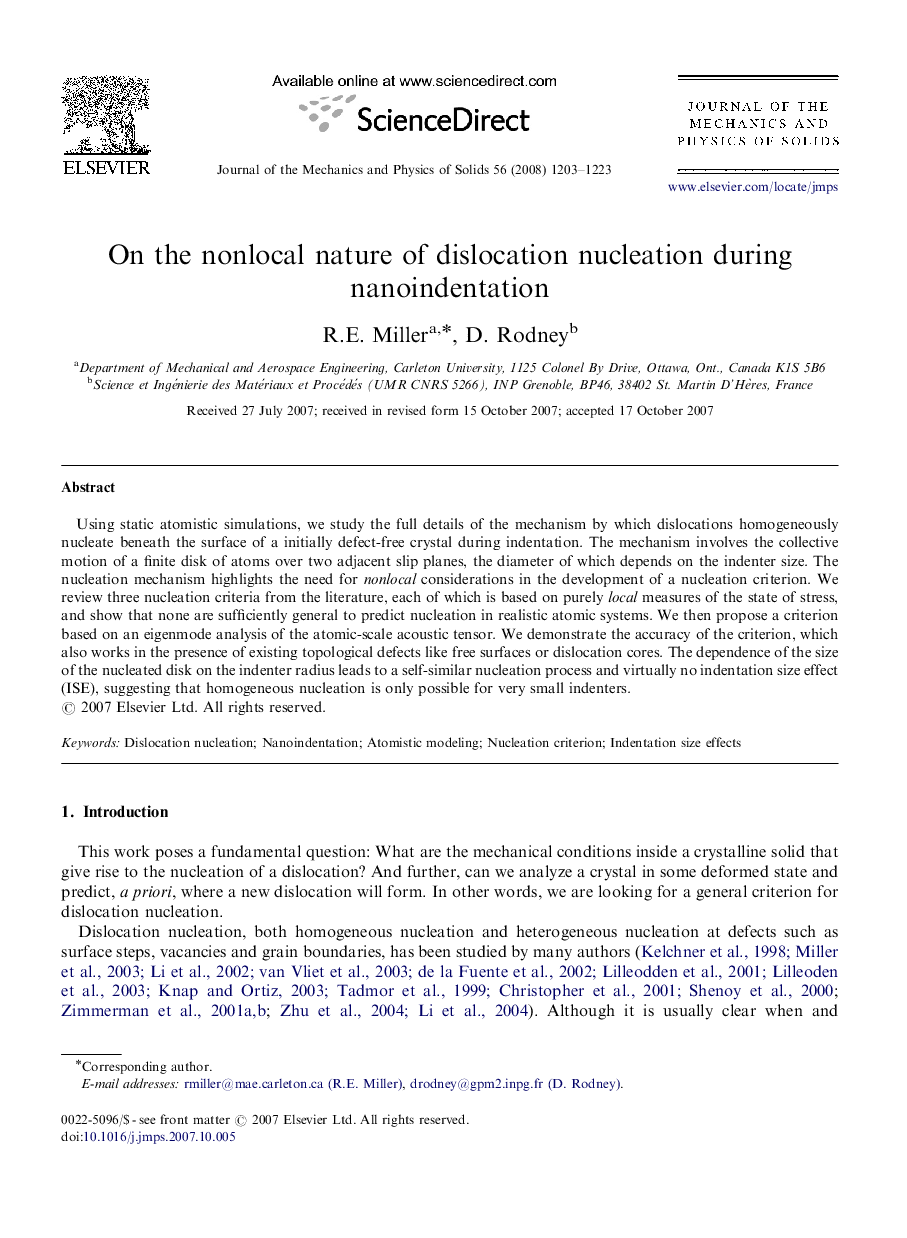| Article ID | Journal | Published Year | Pages | File Type |
|---|---|---|---|---|
| 800049 | Journal of the Mechanics and Physics of Solids | 2008 | 21 Pages |
Using static atomistic simulations, we study the full details of the mechanism by which dislocations homogeneously nucleate beneath the surface of a initially defect-free crystal during indentation. The mechanism involves the collective motion of a finite disk of atoms over two adjacent slip planes, the diameter of which depends on the indenter size. The nucleation mechanism highlights the need for nonlocal considerations in the development of a nucleation criterion. We review three nucleation criteria from the literature, each of which is based on purely local measures of the state of stress, and show that none are sufficiently general to predict nucleation in realistic atomic systems. We then propose a criterion based on an eigenmode analysis of the atomic-scale acoustic tensor. We demonstrate the accuracy of the criterion, which also works in the presence of existing topological defects like free surfaces or dislocation cores. The dependence of the size of the nucleated disk on the indenter radius leads to a self-similar nucleation process and virtually no indentation size effect (ISE), suggesting that homogeneous nucleation is only possible for very small indenters.
